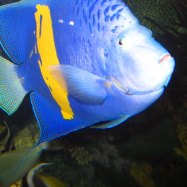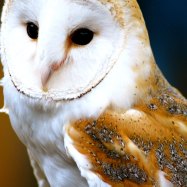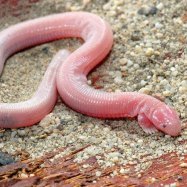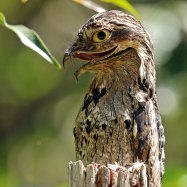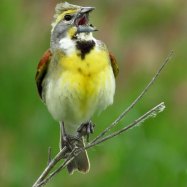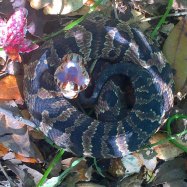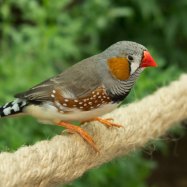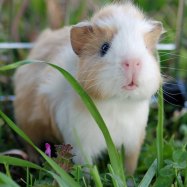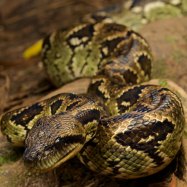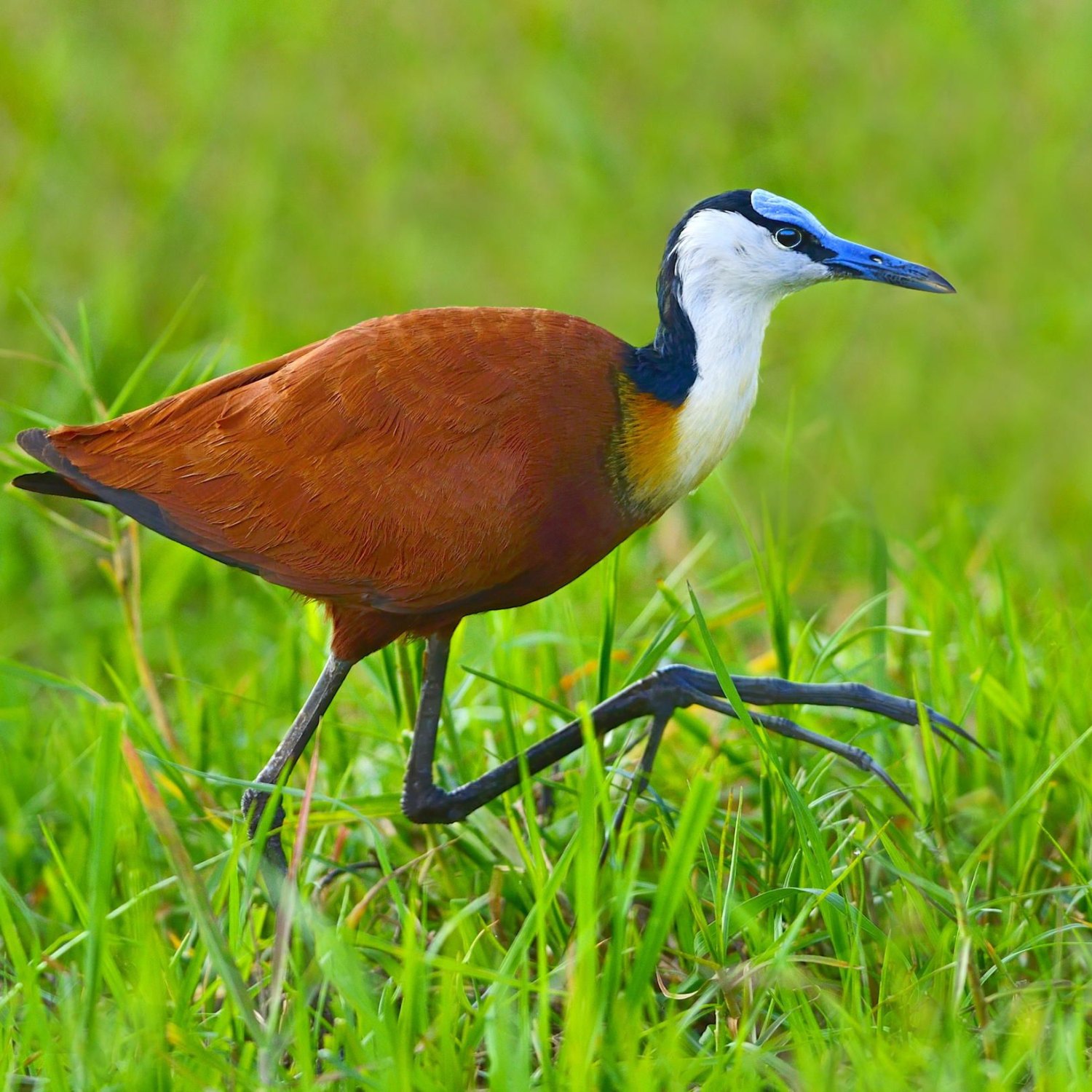
Jacana
20-26 centimeters
Jacanas are fascinating birds found in various wetland areas around the world. With a body shape that is slender and long legs and toes, these birds are known for their impressive feats of walking on waterlilies and other floating plants. They belong to the Jacanidae family and can grow up to 20-26 centimeters in length. Next time you visit a wetland, keep an eye out for these unique and graceful creatures! #Jacanidae #Jacanas #WetlandBirds #SlenderBody #WalkingOnWater
Animal Details Summary:
Common Name: Jacana
Kingdom: Animalia
Habitat: Marshes, swamps, and lakeshores
The Graceful Jacana: A Master of Walking on Water
Nature never ceases to amaze us with its extraordinary creations, and one such mesmerizing bird is the Jacana. With its elegant appearance and unique ability to walk on water, the Jacana is a bird that has captured the hearts of many bird watchers and nature lovers. Also known as a "lily-trotter," the Jacana has a fascinating lifestyle that makes it stand out from other birds. In this article, we will dive into the world of this fascinating bird and learn more about its habitat, behavior, and unique features Jacana.Classification and Distribution
The Jacana, scientifically known as Jacana, belongs to the animal kingdom, phylum Chordata, and class Aves. They are a member of the family Jacanidae, an order of birds called Charadriiformes, which includes other birds such as plovers and sandpipers. There are eight species of Jacanas, and they are mainly found in tropical and subtropical regions of the world. Some of the countries where they can be spotted include India, Nepal, Columbia, Argentina, and Venezuela.Habitat and Feeding
Jacanas are birds that are adapted to live in wetland areas, such as marshes, swamps, and lakeshores. They prefer areas with shallow water and abundant vegetation, which provide them with the necessary resources for survival. These birds are omnivorous, meaning they feed on a variety of food sources, including insects, small fish, crustaceans, and seeds. Their long toes and specialized nails enable them to walk on floating vegetation, where they can easily pick up their prey. They also have a sharp beak for cracking open hard shells, making them skilled hunters Japanese Terrier.Appearance and Behavior
Jacanas are known for their striking appearances, with their slender body shape, long legs, and eye-catching colors. They have a brown and black plumage, with a distinctive yellow chest and red eyes. Male and female Jacanas have similar appearances; however, males are slightly larger than females. The most striking feature of Jacanas is their long toes and claws, which they use to navigate through vegetation and walk on water. These unique toes are also used for fighting with other males during mating season to gain territory and access to females.Apart from their physical features, Jacanas are also known for their intriguing behavior. They are mostly solitary birds, but during the breeding season, they pair up and can be spotted with their partners. They are territorial birds, and males often display aggressive behavior towards other males to defend their territory. One of the most mesmerizing behaviors of the Jacana is their ability to "walk on water." Their long toes distribute their weight, allowing them to effortlessly walk on floating leaves and lily pads without sinking.
Conservation Status and Threats
Despite their unique abilities and graceful appearance, Jacanas face several threats that affect their population. Human interference, such as habitat destruction and pollution, is a significant threat to the Jacana's survival. Wetland degradation and development activities near their habitat lead to a decline in their population. They are also hunted for their meat and feathers, which are used for decoration and traditional medicines.Currently, all species of Jacanas are listed as "Least Concern" on the International Union for Conservation of Nature (IUCN) Red List. However, their populations are declining due to various threats, and it is essential to take measures to protect these birds and their habitats.
How You Can Help
As a nature lover, you can contribute to the conservation of Jacanas and other wetland species by taking simple actions. Support conservation organizations that work towards preserving wetland habitats and educating people about the importance of these areas. You can also make small changes in your daily life, such as reducing your water usage and proper waste disposal, to help protect wetlands. And when visiting wetland areas, remember not to disturb the wildlife and maintain a safe distance to avoid disturbing their natural behavior.Conclusion
In conclusion, the Jacana is a bird that captivates us with its unique appearance and behaviors. It has evolved to have specialized adaptations that allow it to survive in difficult environments, making it a master of survival. However, like many other species, the Jacana faces threats to its survival, and it is our responsibility to ensure the conservation of these beautiful birds for generations to come. So let us appreciate and protect the graceful Jacana and other wetland species, for they are an essential part of our diverse natural world.

Jacana
Animal Details Jacana - Scientific Name: Jacana
- Category: Animals J
- Scientific Name: Jacana
- Common Name: Jacana
- Kingdom: Animalia
- Phylum: Chordata
- Class: Aves
- Order: Charadriiformes
- Family: Jacanidae
- Habitat: Marshes, swamps, and lakeshores
- Feeding Method: Omnivorous
- Geographical Distribution: Tropical and subtropical regions
- Country of Origin: Multiple countries
- Location: Various wetland areas
- Animal Coloration: Variable, mainly brown and black
- Body Shape: Slender with long legs and toes
- Length: 20-26 centimeters
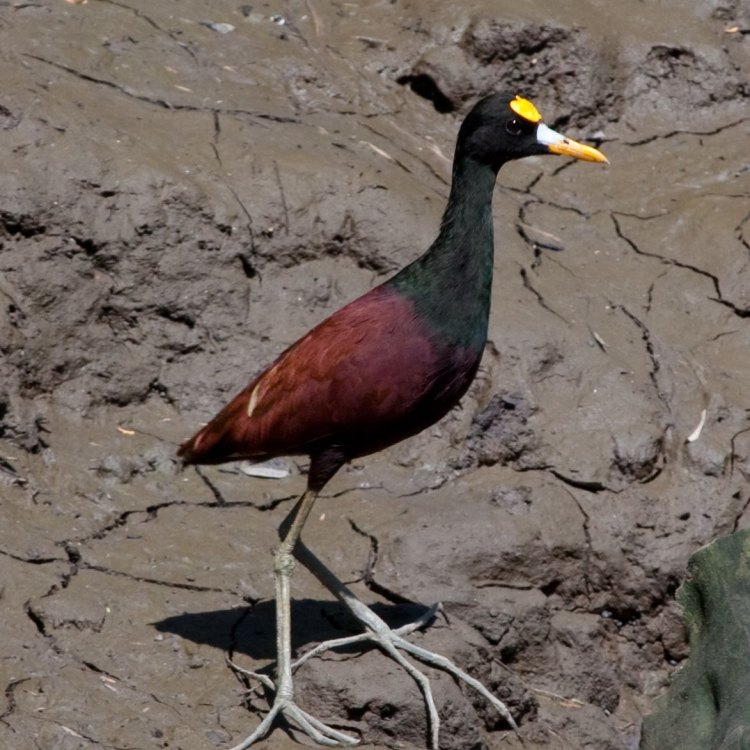
Jacana
- Adult Size: Small
- Average Lifespan: 5-8 years
- Reproduction: Oviparous
- Reproductive Behavior: Polyandrous
- Sound or Call: Loud calls, both territorial and social
- Migration Pattern: Non-migratory
- Social Groups: Solitary or small groups
- Behavior: Feeds by walking on floating vegetation
- Threats: Habitat loss, pollution, and hunting
- Conservation Status: Dependent on species
- Impact on Ecosystem: Seed dispersal and control of insect populations
- Human Use: Occasionally hunted for meat and feathers
- Distinctive Features: Long toes and claws for walking on lily pads
- Interesting Facts: Male Jacanas are responsible for building nests and incubating eggs
- Predator: Various large birds and reptiles
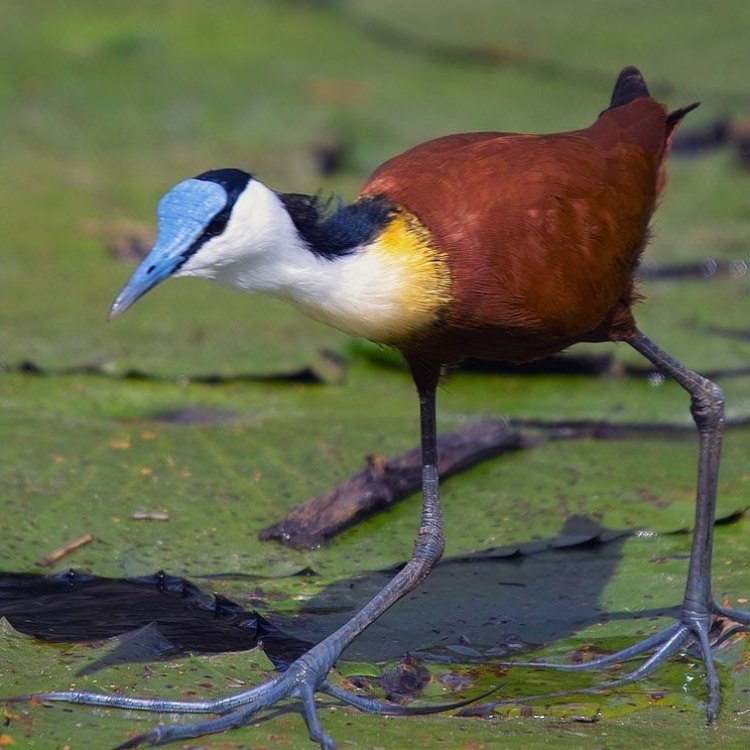
Jacana
The Fascinating World of Jacanas: Small But Mighty Birds
The graceful waterbirds known as Jacanas are a unique and fascinating species that can be found in tropical and sub-tropical regions around the world. Despite their small size, these birds have many interesting features and behaviors that make them stand out in the avian world. Let's take a closer look at these charming creatures and uncover what makes them so special.Size and Lifespan
The Jacana is a relatively small bird, with an average adult size ranging from 6 to 10 inches in length PeaceOfAnimals.Com. They have long legs and toes, with sharp claws that enable them to walk on lily pads and other floating vegetation. Despite their small size, they are adept swimmers and can fly short distances.These birds have a relatively short lifespan, with an average of 5 to 8 years in the wild. However, some species have been known to live up to 12 years in captivity.
Reproduction and Behavior
Jacanas are oviparous birds, meaning they lay eggs to reproduce. However, what makes their reproductive behavior truly fascinating is the fact that they are polyandrous. This means that the females will mate with multiple males and leave them to take care of the eggs and chicks.The males are the primary caregivers for the young, building nests and incubating the eggs while the females move on to find other mates. This unique breeding behavior is nature's way of ensuring the survival of the species in unpredictable environments Japanese Bantam Chicken.
Sounds and Calls
Jacanas are known for their loud and distinctive calls, which are used for both territorial and social communication. These calls can vary depending on the species, but they are generally high-pitched and shrill.During the breeding season, males will make loud and repetitive calls to attract females and defend their territory from other males. These calls can be heard from long distances and play a crucial role in the birds' social interactions.
Migration and Social Groups
Unlike many other bird species, Jacanas are non-migratory, meaning they do not undertake long-distance seasonal migrations. They prefer to stay in their preferred habitats, which typically consist of wetlands, marshes, and shallow lakes.Jacanas are either solitary or found in small groups, depending on the species. They are generally not very social birds, and they prefer to have their space and resources to themselves.
Feeding Behavior
One of the most unique features of Jacanas is their feeding behavior. These birds have long toes and sharp claws that enable them to walk on floating vegetation, such as lily pads. They use these skills to forage for insects, small fish, and other invertebrates in the water.Jacanas are also known to feed on the seeds of aquatic plants, making them important seed dispersers for these plants. Additionally, they help to control insect populations, making them beneficial to the ecosystem.
Threats and Conservation Status
Like many other animal species, Jacanas face significant threats to their survival. Habitat loss, pollution, and hunting are the main factors that contribute to their decline in numbers. These birds rely heavily on wetland habitats, which are under immense pressure from human activities such as agriculture and urban development.Jacanas also face threats from the illegal wildlife trade, as they are occasionally hunted for their meat and feathers. Additionally, they are often captured for the exotic pet trade, adding to the decline of their populations.
The conservation status of Jacanas varies depending on the species. While some are considered of least concern, others, such as the Madagascar Jacana, are listed as vulnerable by the IUCN Red List.
Human Use and Impact on Ecosystem
Jacanas have been occasionally hunted by humans for their meat and feathers, although this practice is becoming less common due to conservation efforts. Additionally, they are prized by birdwatchers and ecotourism, contributing to the local economy.As previously mentioned, Jacanas play an essential role in the ecosystem by controlling insect populations and dispersing seeds. They help to maintain the delicate balance of wetland habitats and contribute to the overall health of the ecosystem.
Distinctive Features
The most distinctive feature of Jacanas is their long toes and sharp claws. These adaptations allow them to walk on lily pads and other floating vegetation without sinking or falling. Other notable features include their colorful plumage and elongated tails, making them a sight to behold in their natural habitats.Interesting Facts
Male Jacanas are the primary nest builders and caregivers, while the females move on to find other mates. This unique behavior is seen in very few bird species, making Jacanas truly unique.Another interesting fact is that Jacanas are known to be excellent mimics. They can imitate the calls of other birds, potentially to confuse predators and protect their young.
Predators
Despite their sharp claws and agility, Jacanas are still vulnerable to various predators. Large birds of prey, such as hawks and eagles, are their most significant threat, along with reptiles such as snakes and crocodiles. Unfortunately, their small size makes them an easy target for these predators.In conclusion, Jacanas may be small, but they are mighty birds with many unique traits and behaviors. From their polyandrous mating habits to their ability to walk on water, these birds continue to fascinate and amaze researchers and nature enthusiasts alike. As we work towards protecting and conserving their habitats, we hope that these striking birds will continue to thrive and enchant us for generations to come.
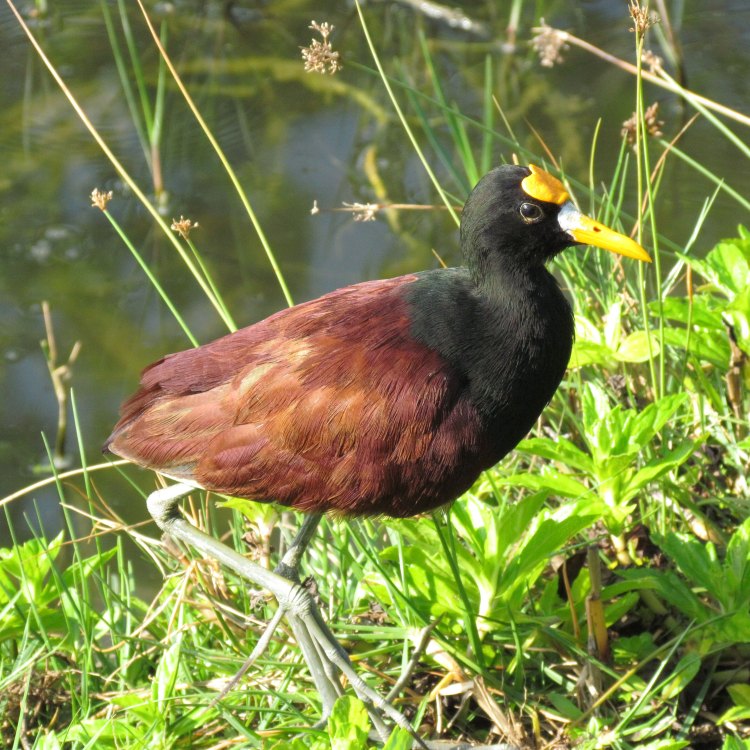
The Graceful Jacana: A Master of Walking on Water
Disclaimer: The content provided is for informational purposes only. We cannot guarantee the accuracy of the information on this page 100%. All information provided here may change without prior notice.

